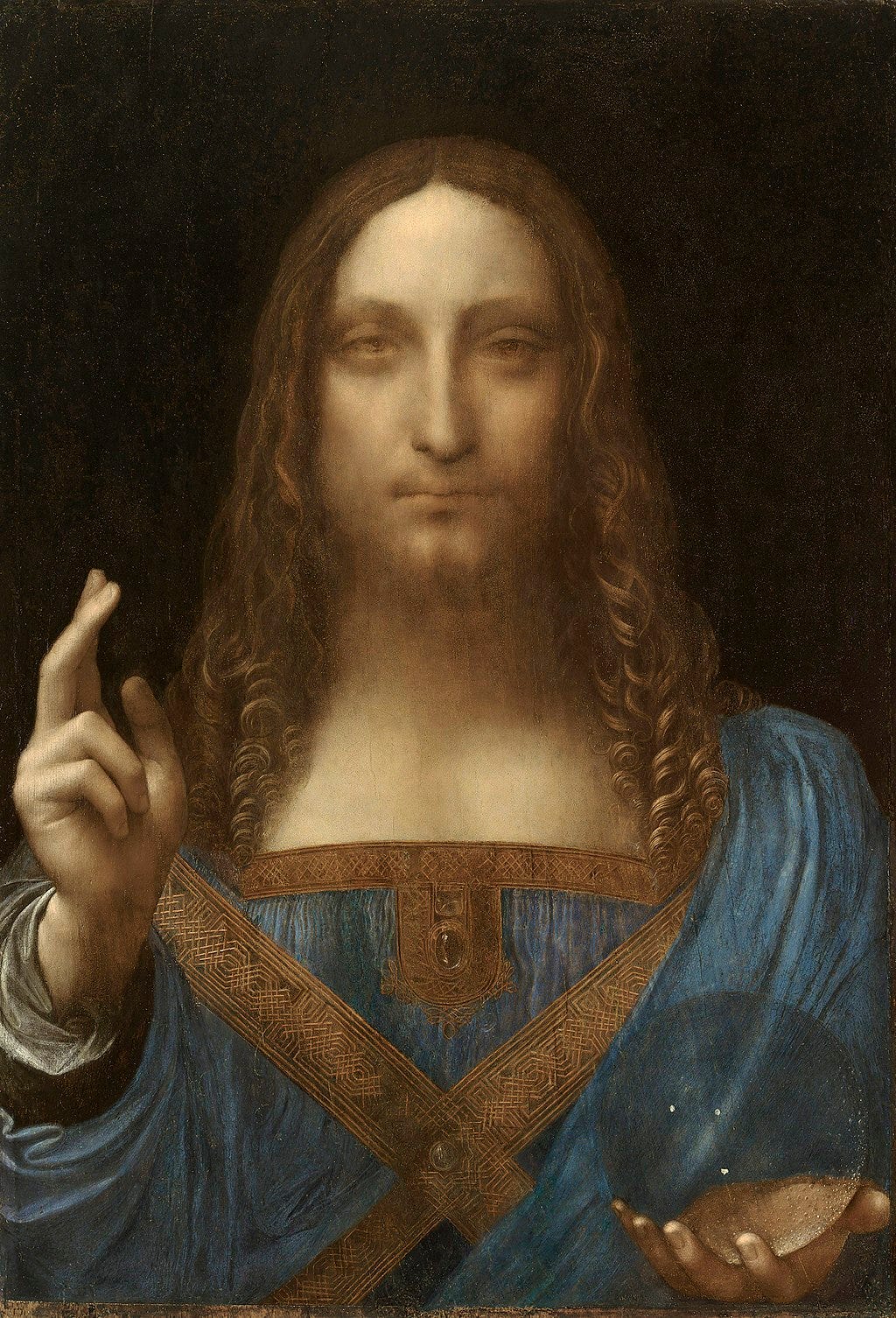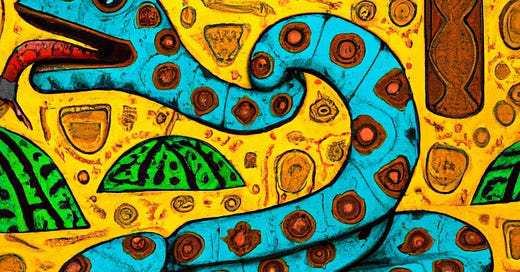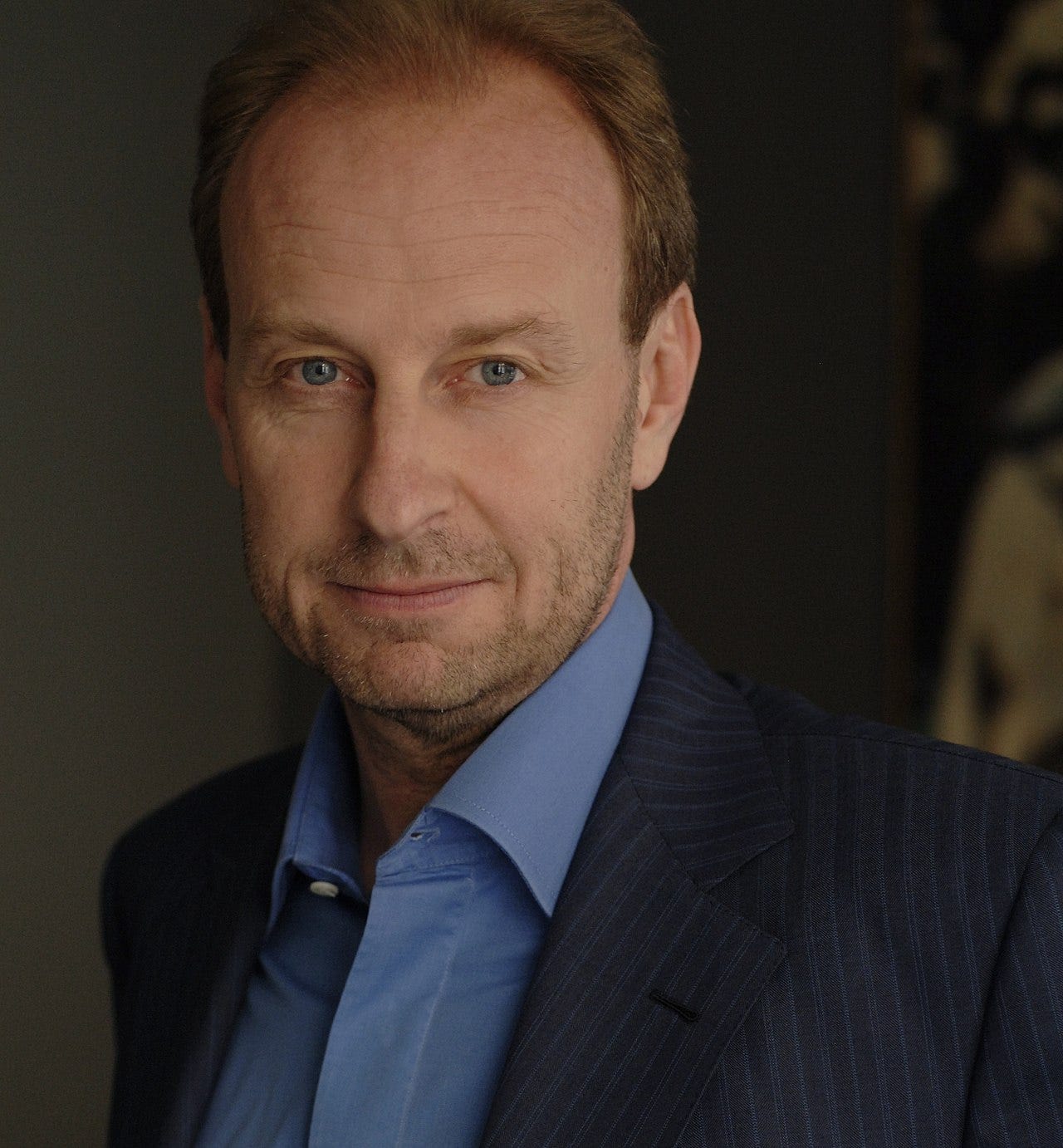In this issue, I am wrapping up my Welcome to Business School MFA thesis project! I am going to take some time to write about what I’ve done, how it turned out, and provide a few “making of” details. If you are a new reader or are behind, this is a great place to get the lowdown on the project. It’s been 10 months of newsletters, simulations, and case studies. I was able to compile the newsletter for my thesis, and my last deliverables are a related artist talk (July 17) and a performance (Aug 3.) I will keep this newsletter going and will be doing some more experimental art-making and writing, as well as continuing our adventures in art and business. I haven’t even really touched on money laundering, fraud, and forgery yet.
WELCOME TO BUSINESS SCHOOL - HOW IT STARTED
In the spring of 2022, I was almost one year into my low-residency MFA program at the Pacific Northwest College of Art in Portland, OR. I was doing a lot of free-range reading and documentary watching, and I had started gravitating toward art business books and movies. I have an MBA from the University of Washington, and let me tell you, graduating in 2008 during a financial meltdown gave me a lot of opportunities to develop an interest in financial true crime. The further I got into the details of the art market, the more I realized what an unregulated, hinky place it was. I watched a couple of documentaries about the (disputed) Leonardo da Vinci painting Salvator Mundi, and I kept coming across this guy Yves Bouvier. My first idea was to center my thesis project on him and how his freeport businesses connect everyone in the art market and help to enable a lot of bad behavior. I envisioned a big true crime murder board, where I could connect him to all sorts of shenanigans, and eventually, there would be so much information, I would have to start linking to things off the board. But this idea, while visually interesting, had a huge problem in that there was no way I could present this much information in such a way that people wouldn’t have to get out their phones and start looking stuff up on the internet.
My MFA mentor at the time, Miriam Simun, asked me a very interesting question, “How could you make this bigger?” I DID NOT EVEN KNOW. But I did have an interesting idea; why not draw up a business plan? By sitting down and really thinking about things in an analytical way, I ended up figuring out that I wanted to talk about the financialization of the contemporary art market to people who were not in it so they could understand the real effect it has on their lives. I also posed this question,
“Art already contains multiple layers of meaning: there is what happens between the art and the artist, the art and the viewer, art as a symbol of status, a representative of culture, and a vehicle for entertainment. Does adding one more layer - financial asset - have any effect on these others?”
In my MBA program, we used lectures, simulations, and case studies to learn from, so I decided to replicate that in my project and create an online business school simulation. In addition to this newsletter (the lectures), I created three smaller simulations, one art show, and one case study. There will be an additional artist talk and a separate lecture/performance later this summer.
THE NEWSLETTER - SELL THE PAINTING
This was the most time-consuming part of the project because so much research went into every issue. However, when it came time to write my thesis, I was already ahead of the game, because I could just take what I already had and reformat it with some light editing. This was intentional on my part because I have an autoimmune disease, and this whole project was structured in a way so I could work on it for about a year and give myself room to slip a bit if I got sick. When I first started in September, I only had about three months of essays and the first simulation planned out. Everything else grew organically from my research and what was happening in the news. In January, I had to get a little more specific because the deadline for my thesis was at the end of April, but my project would not be done for a couple of months after that. I had hoped to be finished with the newsletter part of the project by the end of May, but in March, I suddenly started having to deal with a host of dizziness issues. I worked when I could, but things kept getting worse, and I got knocked back a month on my (self-imposed) deadline. (It turns out I am having continuous vestibular migraines. I am on medication, but it’s been a bit of a struggle to get the dosage right.)
I write the newsletter in Google Docs and then import it to Substack. I chose Substack because it’s free, and it’s fine. No platform comes without issues, but this one also had a web presence where I could direct people instead of just existing as a newsletter.
Newsletter topics and links:
2) A Suitcase Full of Cash: In which I define some terms.
3) A Sale of Two Paintings: The rise of ultracontemporary.
4) Let's Create an Art Fund: Simulation #1 and the lowdown on Masterworks and Particle art funds.
5) Ripped From the Headlines: Yieldstreet has an art debt fund!
6) Jeff Koons Makes Art Boring: Dude sure likes multiples.
7) Art as Currency: Damien Hirst makes spots. And NFTS.
8) Let's Give the People What They Want!: I take advantage of the AI boom to create the art my readers want to see.
9) Let the Voting Commence!: We vote on our favorite AI image and engage in a mid-project review.
10) Scandal Sheet: Kusama and Warhol: Who is making money from Kusama? Also, Warhol price fixing.
11) Who are Museums Actually For?: Donors! It's donors!
12) Art and Taxes: Not boring! I swear!
13) Art as Currency Part 2: Yeah, the financialization of art is not so great.
14) Art Collector Simulation: Can you do what it takes to get off the gallery waitlist?
15) Art Collecting and Learning to Look: It's not all about the money.
16) Case Study: The Salvator Mundi: A hotbed of ethical issues.
SIMULATION #1: THE ART FUND
Early on, I spent some time talking about art funds where people come together to buy shares in a work of art and then flip it (hopefully) to make a profit. I created a Yayoi Kusama/Andy Warhol mashup screenprint and sold shares in it for $1 per share. (This was real money for real shares.) 19 people bought 76 shares. The shareholders got to decide if they wanted me to cut up the print and send them their proportional amount or if we were going to list it on eBay and try to flip it. They voted to flip it! So I listed it on eBay and it sold to an epidemiologist living in Amman, Jordan.
This was the hardest of the simulations because I am not the biggest people person, and it was really scary for me to ask people to get involved. While a lot of the project took place through Substack, I also utilized Instagram a lot. I worried about being annoying or that no one would be interested. It turns out though, for every simulation I got exactly the number of people I could best handle. Never too few. Never too many. The participants tended to be people I knew, but a lot of them were loose connections, and I did actually meet some new people through this project. I WOULD LIKE TO THANK ALL OF THE PARTICIPANTS FOR MAKING THIS A GREAT EXPERIENCE. Almost all the simulations went super smoothly, and I could not have done it without their help.
Auction details at the bottom of this post.
SIMULATION #2: LET’S GIVE THE PEOPLE WHAT THEY WANT
I spent a little time on artists who create work geared towards what will sell rather than with a point of view. (Jeff Koons and Damien Hirst mostly.) I’ve been experimenting with artificial intelligence image generators for about a year now, and some of the issues I see with this technology is that it’s just gonna give people more of what they are already consuming. Want endless episodes of your favorite TV show? AI can give it to you as long as you are willing to have ads served to you. So many interesting things could be done with entertainment AI, but as social media (and plans for the metaverse) have shown us, it’s all gonna be in service of keeping our attention long enough to sell us things. I want to see things imbued with the intention of their creators, not endless content geared toward my desires. That shows me nothing about the world except my own reflection.
So, I had folks on Substack and Instagram give me some keywords to plug into Dalle*2. I received around 30 responses, and then I created six images using those keywords. People got to vote for their favorite one, and this was the winner!
I took that image and made a piece of art that only the voters got to see. It’s a little video of the snake giving a weird TED Talk. It’s not as good as I wanted it to be, but I was already starting to be dizzy at that point, and I just didn’t have the emotional resources to make it better AND work on the rest of this project AND my thesis.
WHAT WE CARRY: AN ONLINE ART SHOW
In February, I wrote a little bit about Yayoi Kusama and her collaborations with Louis Vuitton. This, and a conversation with my classmate Joe Bun Keo, got me thinking about what my luxury collaboration bag would look like. I decided that the participants in Welcome to Business School should have a chance to design their bags as well, and here is the prompt I gave in my call for entry:
“If you were going to do a collaboration with a luxury brand, what would your signature bag look like, hold, or represent? This is not about creating a dream bag, but a chance to explore the commodification of identities - artistic or otherwise. You can view this as a good or bad thing, have fun or be super serious.”
This is another project that turned out really well. 13 people (some artists, some not) responded to the call, and they all sent in fun and interesting things. I WANT TO THANK ALL THE PARTICIPANTS FOR MAKING THIS SO MUCH EASIER THAN I WORRIED IT WOULD BE. I built a little online show catalog in Twine, a tool you can use to create HTML choose-your-own-adventure stories among other things, and created a little gallery space on my website. (I guess I have an online art gallery now.) You can see an archived version of the show here.
SIMULATION #3: ART COLLECTOR SIMULATOR
A lot of what I talk about in my newsletter has to do with poor collector behavior, so I decided to create an art collector simulation game, also using Twine. It’s not that easy to walk in off the street and buy an investment-grade piece of art. There are a whole host of hoops you need to jump through before you can take a piece home, and sometimes it can take years if it even happens at all. I created two tracks for players to go down: gallery and auction. It is possible to win the game and take a piece home, but there are far more scenarios where folks just end up on a never-ending waitlist. At this point in the project, I was just putting the finishing touches on my thesis before I handed it in, and it was nice to work on something less essay-like. You can play the game here.
CASE STUDY: SALVATOR MUNDI
I’ve mostly dealt with contemporary art in this project, but I decided to go back to the very beginning and take another look at the Salvator Mundi, the most expensive painting sold at auction. Even though it is a (disputed) masterwork by Leonardo da Vinci, it was last publicly sold by Christie’s in one of their Contemporary and Modern auctions. Since its rediscovery in 2005, there has been a whole raft of ethical questions surrounding it. Its origins are heavily disputed; is it by Leonardo, his studio, a student, or someone else entirely? Was its restoration too aggressive? Was the main point of the restoration to gussy it up so someone would buy it? During its next sale, did the Swiss businessman take advantage of the Russian Oligarch, or did the Russian fail to do his due diligence on the machinations of the art world? During the next sale, did Christie’s auction house leave out crucial information regarding the origins of this painting? Should we feel bad for Mohammed bin Salman for buying something that is probably in no way worth what he paid? (He’s a bad dude, so I say no.)

I wrote a case study asking these questions and then invited newsletter readers to jump on Zoom with me to discuss them. I only got three takers, and once again, it was the exact right amount of people. I’ve been having dizziness issues again, and I was worried I would not be able to handle it, but I didn’t want to skip this part of the project because I really wanted to see if this is something I might want to try again in the future. But instead of being super stressed out and anxious, I hung out with some of my favorite people and had an opportunity to discuss the ethical issues related to this case. THANK YOU THREE FOR HANGING OUT WITH ME ON THE INTERWEBS!
You can read the case study here.
OTHER EVENTS.
On July 17, 2023, at 4:00 I am going to be giving an artist’s talk about this project at the Pacific Northwest College of Art in Portland, OR. I’m gonna try to Zoom it and will let you know how to watch if you are so inclined.
On Aug 3, 2023, at 4:00 I will be giving a lecture/performance called Global Network: Circles of Corruption in the Art Market. It sounds serious, but there will be jokes. I AM FINALLY GOING TO GET TO BUILD MY MURDER BOARD ABOUT YVES BOUVIER! I solved the problem of not being able to give the piece context by building the board in real-time and explaining all the connections to the audience verbally. With jokes! It’s a lecture! It’s a performance! It’s at the Pacific Northwest College of Art! I have a friend coming to record it, and if that turns out well, then I will post a link in a newsletter, so you all can see it too.
A FEW LAST THINGS
The newsletter name is inspired by this painting by Christopher Wool.
This issue is where I answer my thesis question and get all philosophical and stuff.
I would like to extend special thanks to my MFA mentors Miriam Simun and Anna Gray, PNCA faculty and staff Ryan Pierce, Erin Dengerink, and Linden Howe, my PNCA student cohort, and everyone who participated in the simulations. One of the points of this project was to make art with one network (the participants) to reflect and critique another network (the contemporary art market.) I could not have done this without the help of the folks who read the newsletter and followed along on Instagram. THE REAL ART WAS THE FRIENDS I MADE ALONG THE WAY.
Gross. Next month I am gonna talk about my obsession with Richard Tuttle’s Light Pink Octagon. It will be an art show. It will be an essay. It will be a newsletter. It will be amazeballs.







Congrats! Would you ever want to turn this project into your own documentary? I've seen most of the art docs you have mentioned, and still had no idea how auctions or galleries worked in the detail you had in your simulation.